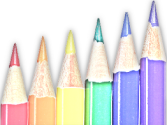SKETCHPAD AND RIGID MOTIONS
I. TRANSLATIONS INVESTIGATIONS
1. Draw a scalene triangle and label the vertices.
2. Select the vertices and sides of your triangle.
3. All parts of the triangle should be selected. Choose TRANSLATE
from the TRANSFORM menu.
4. In the translate box, click on RECTANGULAR VECTOR. Enter 2 for the
horizontal and 3 for the vertical. Click OK.
5. Select SNAP TO GRID from the GRAPH menu. You should find that your
triangle moved _____ units over and ____ units up.
6. Under the FILE menu choose NEW SKETCH. Draw another triangle and
repeat the above steps. Use different numbers for the horizontal and
vertical moves. Your horizontal entry is ______ and your vertical
entry is _____. Your triangle moved ____ units over and ____ units
up/down.
II. REFLECTIONS
1. Draw a scalene triangle and label the vertices.
2. Draw a line beside your triangle. With this line selected choose
MARK MIRROR from the TRANSFORM menu. The line should flash to alert
you that the command has been executed.
3. Select all parts of the triangle. Choose REFLECT from the
TRANSFORM menu.
4. Draw what you see on your screen.
5. Draw a second line just below the reflection. Select it and choose
MARK MIRROR from the TRANSFORM menu.
6. Select all parts of the reflected triangle. Choose REFLECT from
the TRANSFORM menu.
7. Sketch what you see on your screen.
III. ROTATIONS
1. Draw a scalene triangle and label the vertices A, B, and C.
2. Use the point tool to locate a point, D, slightly below the
triangle. With this point selected, choose MARK CENTER from the
TRANSFORM menu.
3. Select all parts of the triangle and choose ROTATE from the
TRANSFORM menu. Enter -45 for the angle of rotation.
4. Measure <ADA’, <BDB’, and <CDC’.
<ADA’____ <BDB’____ <CDC’____
5. Draw a sketch of the screen.
6. Under the FILE menu choose NEW SKETCH and go through these steps
again with a different triangle and a different angle of rotation.
Record your angle measures and draw your sketch.
IV. REFLECTION AND ROTATION
1. Select CREATE AXES from the GRAPH menu.
2. Draw a scalene triangle in the upper left hand quadrant and label
the vertices.
3. Select the y-axis and choose MARK MIRROR from the TRANSFORM
menu.
4. Select all parts of the triangle and choose REFLECT from the
TRANSFORM menu.
5. On your paper, draw a sketch of what you see on your screen.
6. Select the x-axis and choose MARK MIRROR from the TRANSFORM
menu.
7. Select the triangle reflection and choose REFLECT from the
TRANSFORM menu.
8. Draw a sketch of the screen.
9. Select the origin. Choose MARK CENTER from the TRANSFORM menu.
10. Select the original triangle. Choose ROTATE from the TRANSFORM
menu. Enter
( -180) as your angle of rotation.
11. What do you observe? Draw a sketch of the screen. You could say a
reflection of a reflection is a ______________
RIGID TRANSFORMATIONS
WITH GEOMETER’S SKETCHPAD
You are to create a design using any polygon. Your design must include a translation, a reflection, and a rotation of the polygon you have chosen as your original. You may use a maximum of two different polygons but you must include all transformations on each one. You may also use a dilation, but this is not a requirement. You will print 2 copies of your design. One copy will be your schematic diagram, showing the original, and listing each transformation and indicating its position in the design. I suggest color coding the schematic to make it easier to follow. On the other copy, you will color your design and name it. This project will be graded on its complexity, completeness, the accuracy of your schematic, and its attractiveness.

